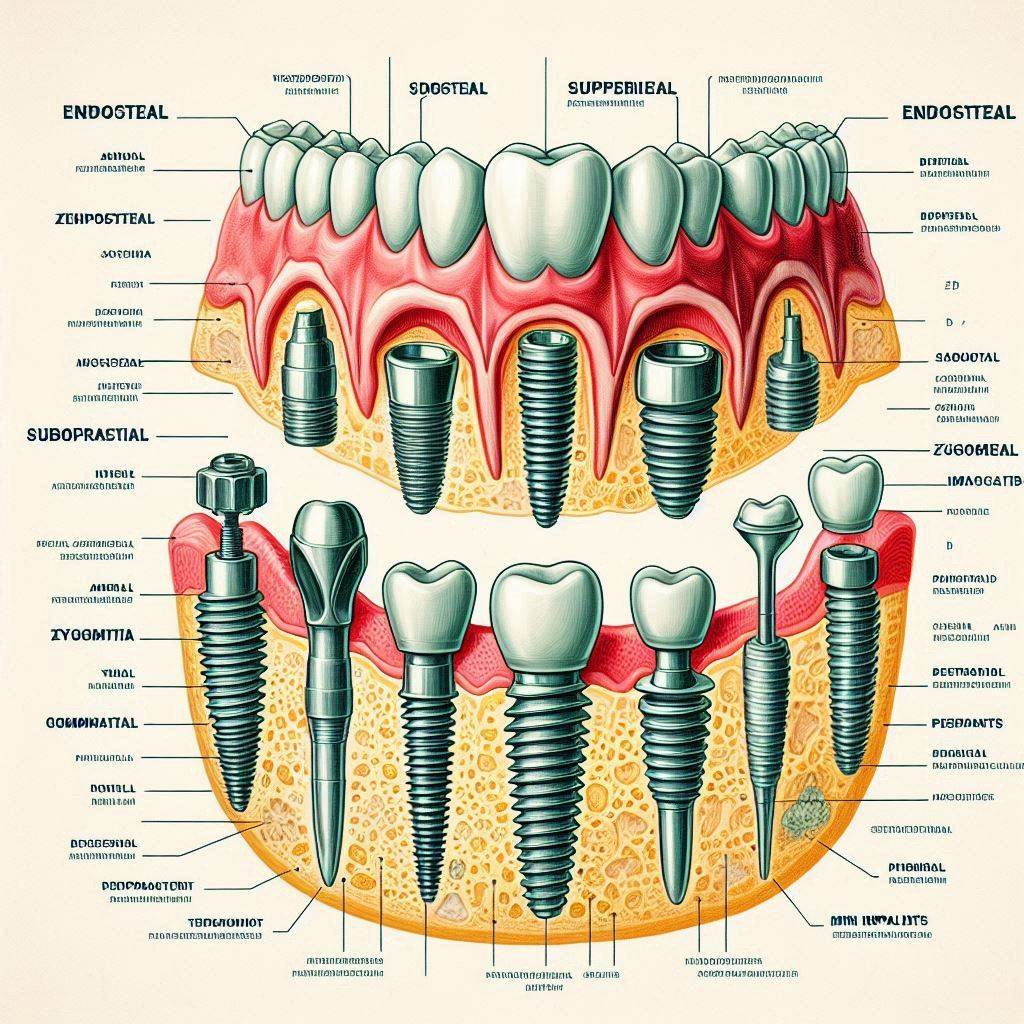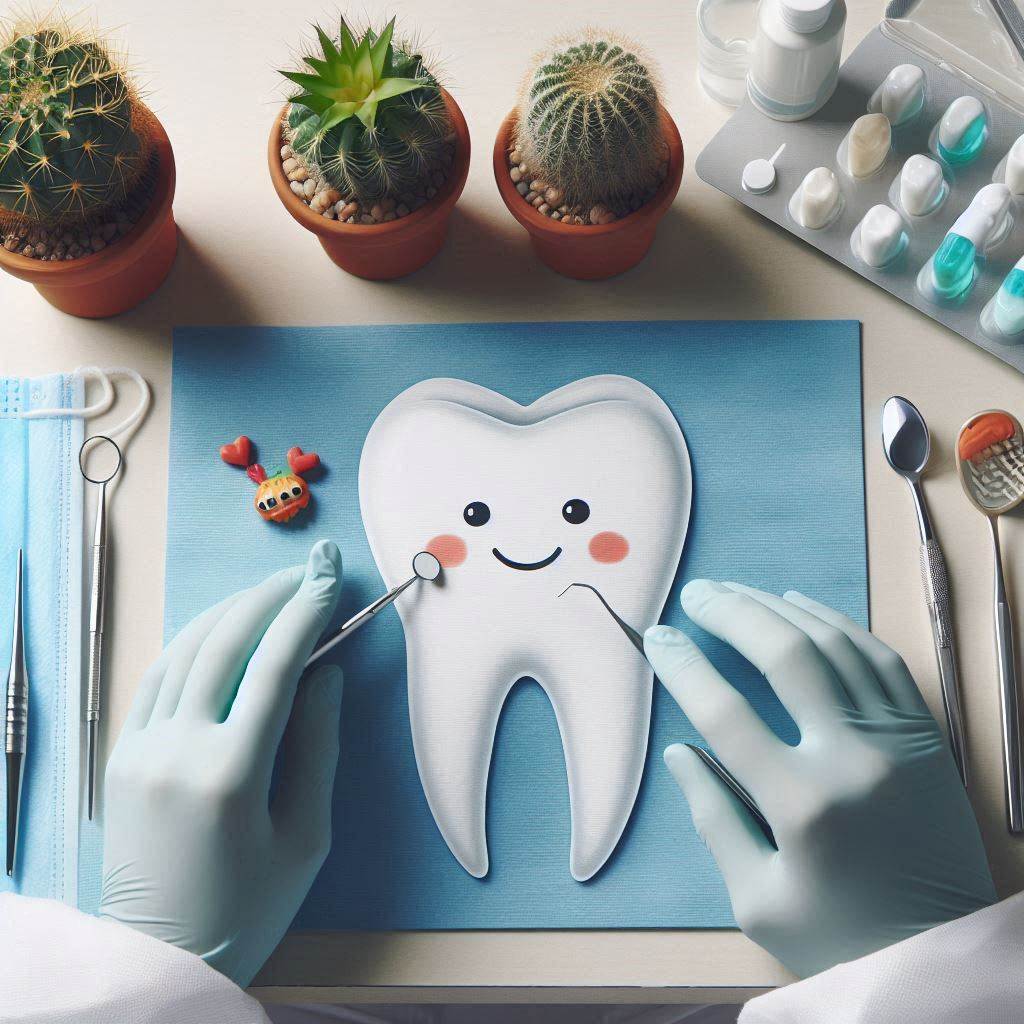Introduction
Dental implants have revolutionized the field of dentistry, offering a long-term solution for missing teeth. This advanced procedure involves placing a titanium post into the jawbone, which serves as a sturdy foundation for a replacement tooth. The relevance of dental implants cannot be overstated, as they not only restore functionality but also enhance aesthetic appeal, contributing significantly to the patient’s overall quality of life.
ProvaDent – Your Trusted Dental Solution
Types and Categories of Dental Implants
Endosteal Implants
Endosteal implants are the most common type of dental implants. They are typically shaped like small screws and are placed directly into the jawbone. These implants are made from biocompatible materials such as titanium and zirconia, ensuring they integrate well with the bone.
Subperiosteal Implants
Subperiosteal implants are placed under the gum but above the jawbone. These are often used for patients who do not have sufficient healthy jawbone and cannot undergo a bone augmentation procedure.
Zygomatic Implants
Zygomatic implants are less common and involve a more complex procedure. These implants are anchored in the cheekbone rather than the jawbone, making them an option for patients with severe bone loss in the jaw.
ProDentim: The Game-Changer in Dental Innovation
Symptoms and Signs Indicating the Need for Dental Implants
Missing Teeth
The most obvious sign that you might need a dental implant is one or more missing teeth. Dental implants provide a durable and aesthetically pleasing replacement for lost teeth.
Difficulty Chewing
If you experience difficulty chewing or discomfort while eating, this could be a sign that you need dental implants. Missing teeth can cause uneven pressure on remaining teeth, leading to pain and difficulty with food intake.
Shifting Teeth
When a tooth is missing, the surrounding teeth can shift, leading to misalignment. Dental implants help maintain the position of your natural teeth.
Jawbone Deterioration
Missing teeth can lead to bone loss in the jaw. Dental implants stimulate bone growth, preventing further deterioration.
ProDentim in Focus: Revolutionizing Dentistry
Causes and Risk Factors for Tooth Loss
Poor Oral Hygiene
Inadequate brushing and flossing can lead to tooth decay and gum disease, which are the leading causes of tooth loss.
Gum Disease
Periodontal disease damages the gums and bone that support the teeth, leading to tooth loss if untreated.
Trauma or Injury
Accidents or injuries to the mouth can result in tooth loss, necessitating the need for dental implants.
Chronic Diseases
Conditions like diabetes and rheumatoid arthritis can increase the risk of periodontal disease and tooth loss.
Smoking and Alcohol Use
These habits contribute to oral health problems, increasing the likelihood of losing teeth.
Diagnosis and Tests for Dental Implant Candidacy
Comprehensive Dental Exam
A thorough dental examination, including X-rays and 3D images, is essential to assess the condition of your jawbone and overall oral health.
Medical History Review
Your dentist will review your medical history to identify any conditions that might affect the success of the implant procedure.
Bone Density Test
A bone density test determines if you have sufficient bone to support an implant. If not, bone grafting may be required.
Treatment Options and Procedures for Dental Implants
Initial Consultation and Planning
The first step involves a detailed consultation to plan the implant procedure. This includes a discussion of your medical history, a comprehensive dental exam, and treatment planning.
Bone Grafting
For patients with insufficient jawbone, a bone grafting procedure may be necessary to create a solid foundation for the implant.
Implant Placement
During the implant placement surgery, the titanium post is inserted into the jawbone. This is typically done under local anesthesia.
Osseointegration
This is a critical phase where the implant fuses with the jawbone, providing a stable base for the replacement tooth. This process can take several months.
Abutment Placement
Once osseointegration is complete, an abutment is attached to the implant. This serves as a connector between the implant and the replacement tooth.
Crown Placement
The final step involves placing a custom-made crown on the abutment, restoring the appearance and function of the missing tooth.
Preventive Measures for Maintaining Dental Health
Regular Dental Check-ups
Regular visits to your dentist for cleanings and exams are crucial for maintaining dental health and early detection of potential issues.
Proper Oral Hygiene
Brushing twice a day, flossing daily, and using mouthwash can help prevent tooth decay and gum disease.
Healthy Diet
A diet rich in fruits, vegetables, lean proteins, and dairy products can contribute to strong teeth and gums.
Avoiding Harmful Habits
Avoid smoking and limit alcohol consumption to reduce the risk of oral health problems.
Personal Stories and Case Studies
John’s Success Story
John, a 45-year-old businessman, struggled with missing teeth for years. After receiving dental implants, he regained his confidence and can now enjoy his favorite foods without discomfort.
Maria’s Transformation
Maria, a 60-year-old retiree, was hesitant about getting dental implants. However, after the procedure, she experienced significant improvements in her quality of life, from better speech to enhanced aesthetics.
Expert Insights
Dr. Jane Smith, DDS
“Dental implants have truly transformed the field of restorative dentistry. They offer unparalleled stability and aesthetics compared to traditional dentures and bridges.”
Dr. Robert Brown, Oral Surgeon
“Patients who undergo dental implant surgery often report a higher quality of life post-procedure. The success rate of dental implants is remarkably high, making them a reliable solution for tooth loss.”
Conclusion
Dental implants are a groundbreaking solution for individuals with missing teeth, offering numerous benefits such as improved oral health, aesthetics, and functionality. By understanding the types, procedures, and preventive measures associated with dental implants, patients can make informed decisions about their oral health. Regular dental check-ups, proper hygiene, and a healthy lifestyle are essential for maintaining the longevity of dental implants. If you are considering dental implants, consult with a qualified dental professional to explore your options and embark on a journey towards a brighter smile.



